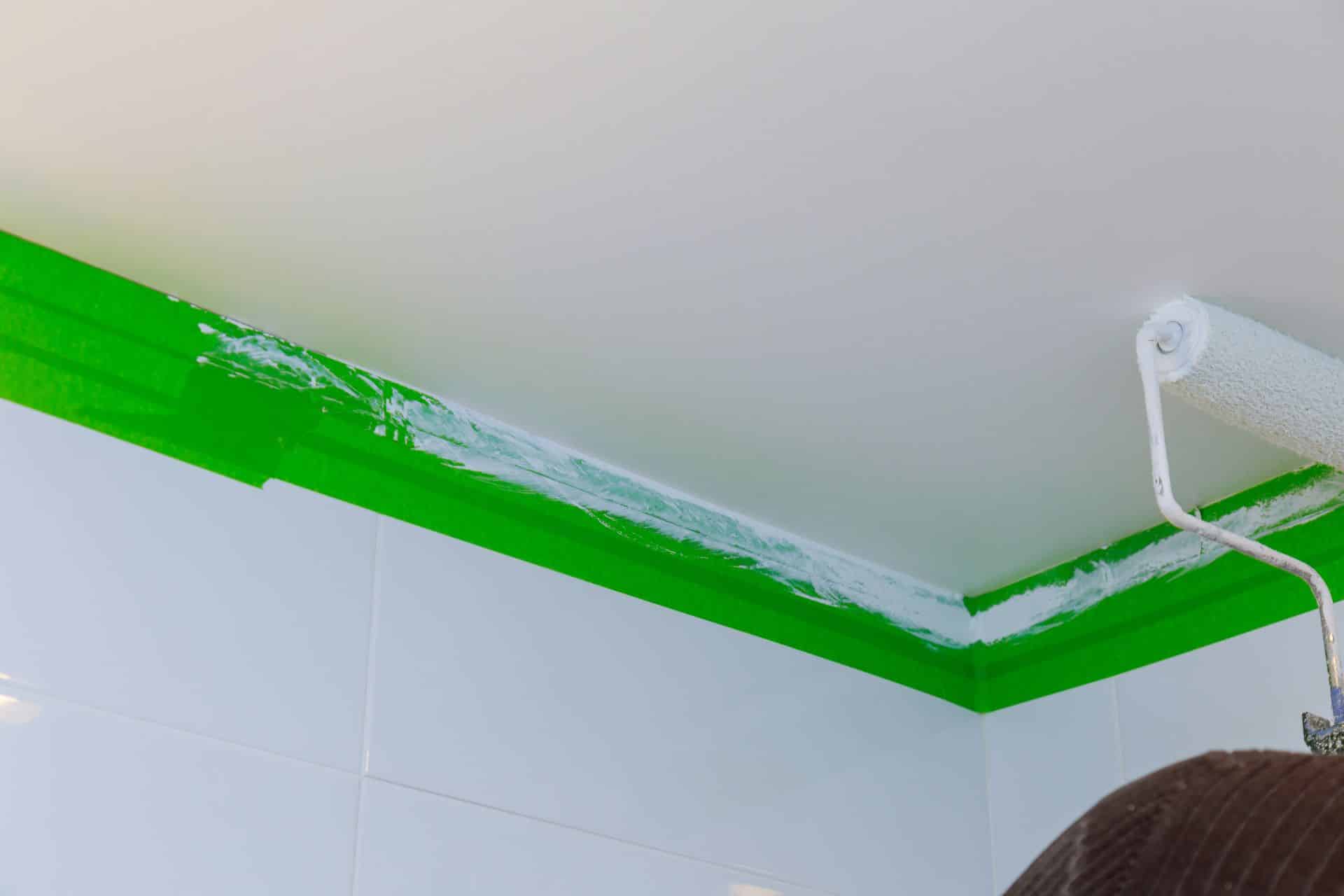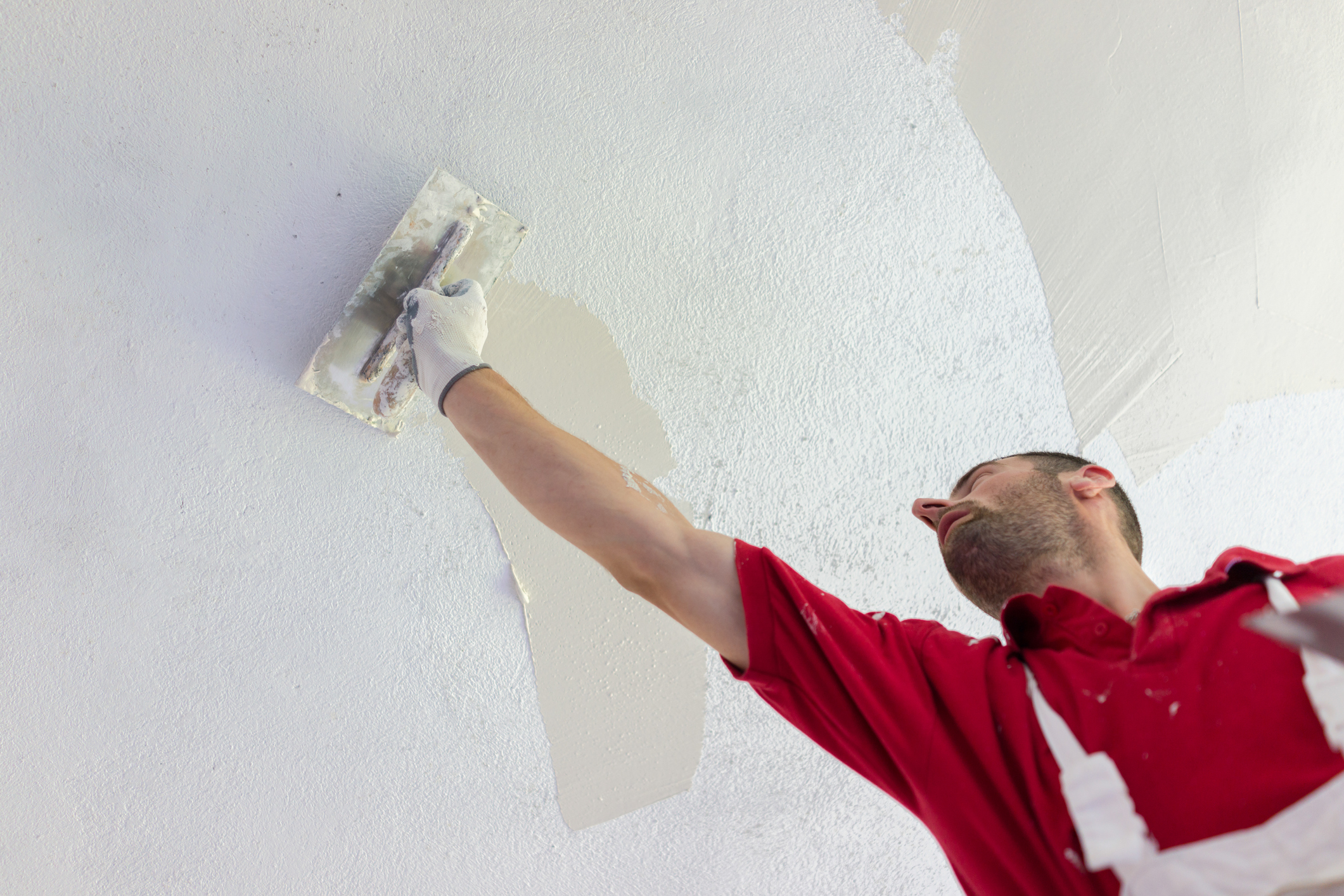Preparing the Ceiling
Before you unleash your inner artist and start painting your bathroom ceiling, you need to make sure the canvas is ready. A well-prepared ceiling ensures a smooth, even finish and prevents paint from peeling or cracking later. This means tackling the most crucial step: letting the plaster dry completely.
Allowing the Plaster to Dry
Newly plastered ceilings need ample time to dry thoroughly. Rushing into painting can lead to problems like paint peeling, cracking, and even mold growth. The drying time depends on factors like humidity, temperature, and the thickness of the plaster. Generally, it takes at least 2-3 weeks for plaster to dry completely, but it’s always best to err on the side of caution and wait a little longer if you’re unsure.
Cleaning the Ceiling, Painting a newly plastered bathroom ceiling
Once the plaster is dry, it’s time to give your ceiling a good cleaning. This removes dust, debris, and any leftover plaster residue that could interfere with the paint adhesion. Here’s how:
Tools for Cleaning the Ceiling
- Dusting Brush: A soft-bristled brush, like a paintbrush or a duster, is perfect for removing loose dust and cobwebs.
- Vacuum Cleaner: A vacuum with a brush attachment can tackle stubborn dust and debris, ensuring a clean surface.
- Damp Cloth: A damp cloth, slightly moistened with water, can help wipe away any remaining residue. Be careful not to saturate the cloth, as excessive moisture can damage the plaster.
Patching Imperfections
Even the most skilled plasterer can leave behind some imperfections. Before painting, take the time to patch any cracks, holes, or uneven areas. This ensures a smooth, flawless finish.
Materials for Patching
- Spackling Paste: This is a versatile material that can be used to fill small cracks and holes. It dries quickly and can be easily sanded.
- Joint Compound: For larger cracks and holes, joint compound is a more robust option. It provides a stronger bond and can be applied in thicker layers.
- Sandpaper: After applying the patching material, use sandpaper to smooth out the surface and blend it with the surrounding plaster. Start with a coarser grit sandpaper and gradually move to a finer grit for a smooth finish.
Step-by-Step Guide to Patching
- Clean the Area: Use a damp cloth to remove any dust or debris from the area you’re patching.
- Apply the Patching Material: Use a putty knife to apply the spackling paste or joint compound, filling the cracks or holes completely. Smooth out the surface as much as possible.
- Let it Dry: Allow the patching material to dry completely according to the manufacturer’s instructions.
- Sand the Patch: Use sandpaper to smooth out the patch and blend it with the surrounding plaster. Start with a coarser grit sandpaper and gradually move to a finer grit for a smooth finish.
- Prime the Patch: Before painting, prime the patched area with a primer designed for plaster. This helps the paint adhere better and prevents the patch from showing through the paint.
Choosing the Right Paint: Painting A Newly Plastered Bathroom Ceiling

Now that your bathroom ceiling is prepped and ready, it’s time to choose the perfect paint. Selecting the right paint is crucial for a long-lasting, beautiful finish.
Types of Paint for Bathroom Ceilings
The bathroom environment poses unique challenges for paint. High humidity and moisture can lead to mold growth, peeling, and cracking. Choosing a paint specifically designed for bathrooms is essential. Here are some popular options:
- Acrylic Latex Paint: This is a popular choice for bathroom ceilings due to its excellent moisture resistance, durability, and ease of application. Acrylic latex paints are also low-VOC (volatile organic compound), making them a healthier option for indoor use.
- Epoxy Paint: Epoxy paint is highly durable and moisture-resistant, making it an excellent choice for areas prone to high moisture levels. It forms a hard, glossy finish that is resistant to mildew and stains. However, epoxy paints can be more challenging to apply and may require professional installation.
- Oil-Based Paint: Oil-based paints are known for their durability and mildew resistance. They provide a smooth, hard-wearing finish that can withstand frequent cleaning. However, oil-based paints take longer to dry and emit strong fumes during application.
Using a Primer
Priming the ceiling before applying the final coat of paint is highly recommended. A primer provides several benefits:
- Improved Adhesion: A primer creates a better bonding surface for the paint, preventing peeling and flaking.
- Enhanced Coverage: Primer helps to cover imperfections and blemishes on the ceiling, providing a smoother, more even finish.
- Moisture Resistance: A primer can create a moisture barrier, reducing the risk of mold and mildew growth.
Color Palette for Bathroom Ceilings
Choosing the right color for your bathroom ceiling can significantly impact the overall ambiance of the space. Here are some factors to consider:
- Lighting: Natural light can make a room appear brighter and more spacious, while artificial light can create a cozier, more intimate atmosphere. Light colors reflect light, making a room feel larger, while dark colors absorb light, creating a more intimate feel.
- Size: Small bathrooms can benefit from lighter colors to make the space feel larger, while larger bathrooms can accommodate bolder colors.
- Overall Bathroom Design: The color of the ceiling should complement the overall design of the bathroom. For example, a modern bathroom might feature a sleek, white ceiling, while a traditional bathroom might have a more elaborate design with a subtle, textured finish.
Popular Bathroom Ceiling Colors
- White: A classic choice that creates a clean, fresh look. White reflects light, making the room feel larger and brighter.
- Light Gray: A versatile option that can be paired with a variety of colors and styles. Light gray provides a calming, neutral backdrop for the bathroom.
- Soft Blue: A calming and refreshing color that evokes a sense of serenity. Soft blue can be a good choice for a bathroom with a spa-like atmosphere.
Tips for Choosing the Right Paint
- Read the Label: Carefully review the product label to ensure the paint is specifically designed for bathrooms and meets your requirements for moisture resistance, durability, and finish.
- Consider the Finish: Matte finishes are popular for bathrooms because they hide imperfections and provide a softer look. However, semi-gloss or gloss finishes are more durable and easier to clean.
- Get a Sample: Before committing to a full gallon, purchase a sample pot and test the color on a small area of the ceiling. This will help you determine how the color looks in your bathroom’s lighting and with your existing décor.
Painting Techniques

Painting a bathroom ceiling requires a steady hand and a little know-how to ensure a smooth and even finish. With the right techniques, you can avoid drips and streaks, leaving your ceiling looking professional and polished.
Using a Roller
A roller is the most efficient tool for covering large areas like a bathroom ceiling. Here’s how to use it effectively:
- Load the roller: Dip the roller into the paint tray, ensuring it’s evenly coated but not overloaded. Remove excess paint by rolling it along the tray’s ridged edge.
- Apply paint in sections: Work in sections, overlapping each stroke by about an inch. This ensures a smooth, even coat without gaps.
- Roll in one direction: Roll the roller in one direction, whether horizontally or vertically, to maintain consistency.
- Avoid pressure: Apply light pressure to the roller, allowing the weight of the roller to do the work.
Using a Paintbrush
A paintbrush is essential for reaching corners, edges, and around fixtures. Here’s how to use it effectively:
- Dip the brush: Dip the brush into the paint, ensuring it’s fully loaded but not dripping.
- Apply paint in thin coats: Use smooth, even strokes to apply paint to corners, edges, and around fixtures.
- Avoid overloading the brush: Overloading the brush can lead to drips and streaks.
- Clean the brush: Clean the brush with paint thinner or water after use to prevent paint from hardening.
Painting Around Fixtures
Painting around fixtures like light fixtures, vents, and bathroom fans requires extra care to avoid paint splatters. Here’s a step-by-step guide:
- Protect surrounding areas: Cover the fixture with painter’s tape and plastic sheeting to protect surrounding areas from paint splatters.
- Use a small brush: Use a small brush to apply paint around the edges of the fixture, ensuring a clean and precise line.
- Avoid overloading the brush: Overloading the brush can lead to paint dripping onto the fixture.
- Remove tape and sheeting: Carefully remove the painter’s tape and plastic sheeting after the paint has dried to avoid damaging the paint.

